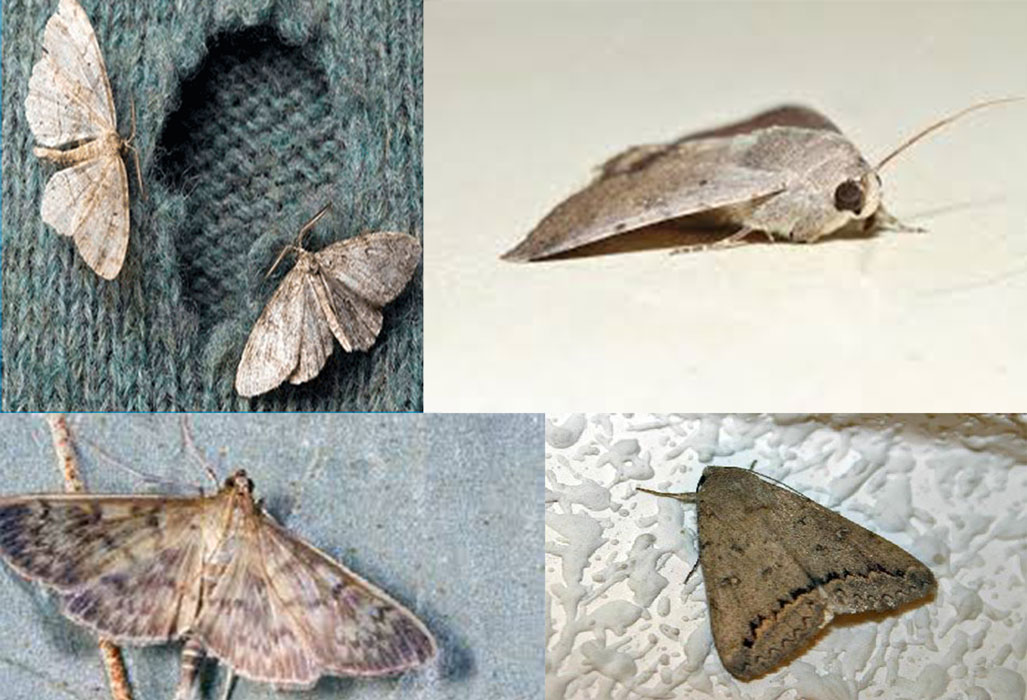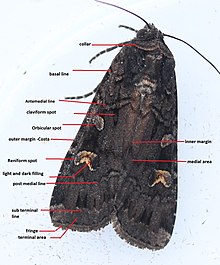
Moths are a group of insects that includes all members of the order Lepidoptera that are not butterflies.[1] They were previously classified as suborder Heterocera, but the group is paraphyletic with respect to butterflies (suborder Rhopalocera) and neither subordinate taxa are used in modern classifications. Moths make up the vast majority of the order. There are thought to be approximately 160,000 species of moth,[2] many of which have yet to be described. Most species of moth are nocturnal, although there are also crepuscular and diurnal species.
Differences between butterflies and moths

While the butterflies form a monophyletic group, the moths, comprising the rest of the Lepidoptera, do not. Many attempts have been made to group the superfamilies of the Lepidoptera into natural groups, most of which fail because one of the two groups is not monophyletic: Microlepidoptera and Macrolepidoptera, Heterocera and Rhopalocera, Jugatae and Frenatae, Monotrysia, and Ditrysia.[3]
Although the rules for distinguishing moths from butterflies are not well established, one very good guiding principle is that butterflies have thin antennae and (with the exception of the family Hedylidae) have small balls or clubs at the end of their antennae. Moth antennae are usually feathery with no ball on the end. The divisions are named by this principle: “club-antennae” (Rhopalocera) or “varied-antennae” (Heterocera). Lepidoptera first evolved during the Carboniferous period, but only evolved their characteristic proboscis alongside the rise of angiosperms in the Cretaceous period.[4]
